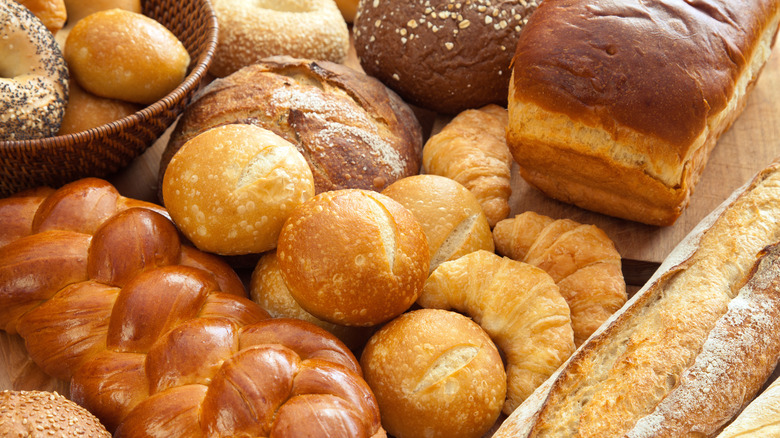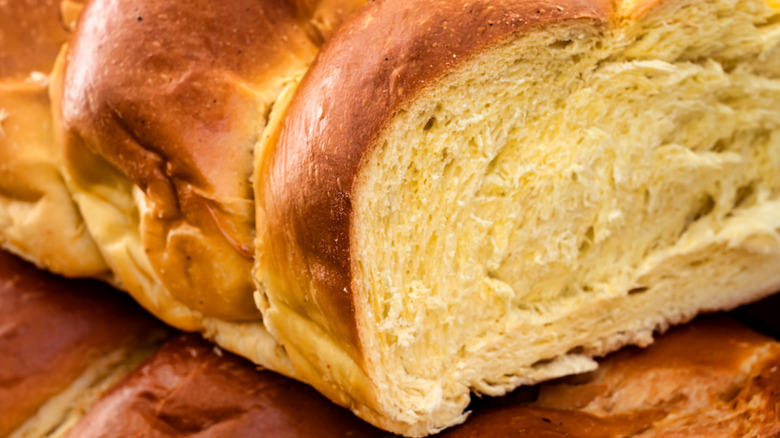What Is The Difference Between Challah And Brioche?
If you're unfamiliar with the intricacies of challah and brioche, you might hold both up and think, "Hm, these breads look pretty similar." Upon closer inspection, you'll discover that's not quite the case. While they both may have that shiny sheen outside and a soft, springy, almost trampoline-like consistency inside, some key differences set the two breads apart.
Challah is a kosher Jewish bread. It's typically eaten on ceremonial and religious occasions, like during Shabbat and Jewish holidays, such as Rosh Hashanah. As far as bread-making goes, the process and ingredients are pretty straightforward: eggs, flour, water, sugar, yeast, and salt. After it's braided into one long strand, it's baked in the oven, creating a dark brown exterior and a noticeably yellow interior from the eggy dough. It's finished with an egg wash to impart a shiny, glossy finish and is sometimes topped with poppy or sesame seeds.
Brioche, on the other hand, is a French bread. Unlike challah, brioche is loaded with butter, giving it its discernibly light, fluffy texture and sweet taste. Brioche is often associated with viennoiserie (pastries baked Viennese-style) because it chemically resembles a combination of bread and pastry. Packed with eggs, butter, milk, cream, flour, and sometimes sugar, brioche is arguably the best mix of savory and sweet in bread form. It is also a yeasted dough, as you can tell by the lofty heights it achieves whether made into a plain loaf, buns, or sweet pastries.
Other differences (and similarities) between challah and brioche
Challah is viewed as a crucial part of meals, as it serves a specific religious purpose depending on the Jewish holiday. The loaves are often oblong, but for certain occasions, loaves are made into circular shapes. Conversely, brioche has no religious significance or purpose; it has enjoyed a lengthy history as a staple in French bakeries throughout the Normandy region.
In France, brioche tends to be served on its own in slices or paired with a bit of butter and homemade jam. The French often bake it with bits of chocolate or dried fruit, but it's just as good plain. Challah can be eaten plain, topped with your favorite spread, or used the next day for French toast. So, there are a few similarities between the two breads.
For example, challah and brioche are both classified as enriched breads. An enriched bread goes beyond the traditional flour, water, and yeast and adds ingredients like milk, butter, sugar, and eggs to make the dough more substantial. While these ingredients help create the springy texture and subtly eggy and sweet taste found in challah and brioche, there are extra precautions to take when baking enriched bread. The caramelized exterior of challah bread is ideal; too long of a bake can result in a much darker (or burnt) color and dryness. Another aspect they have in common? Both breads are downright delicious.

